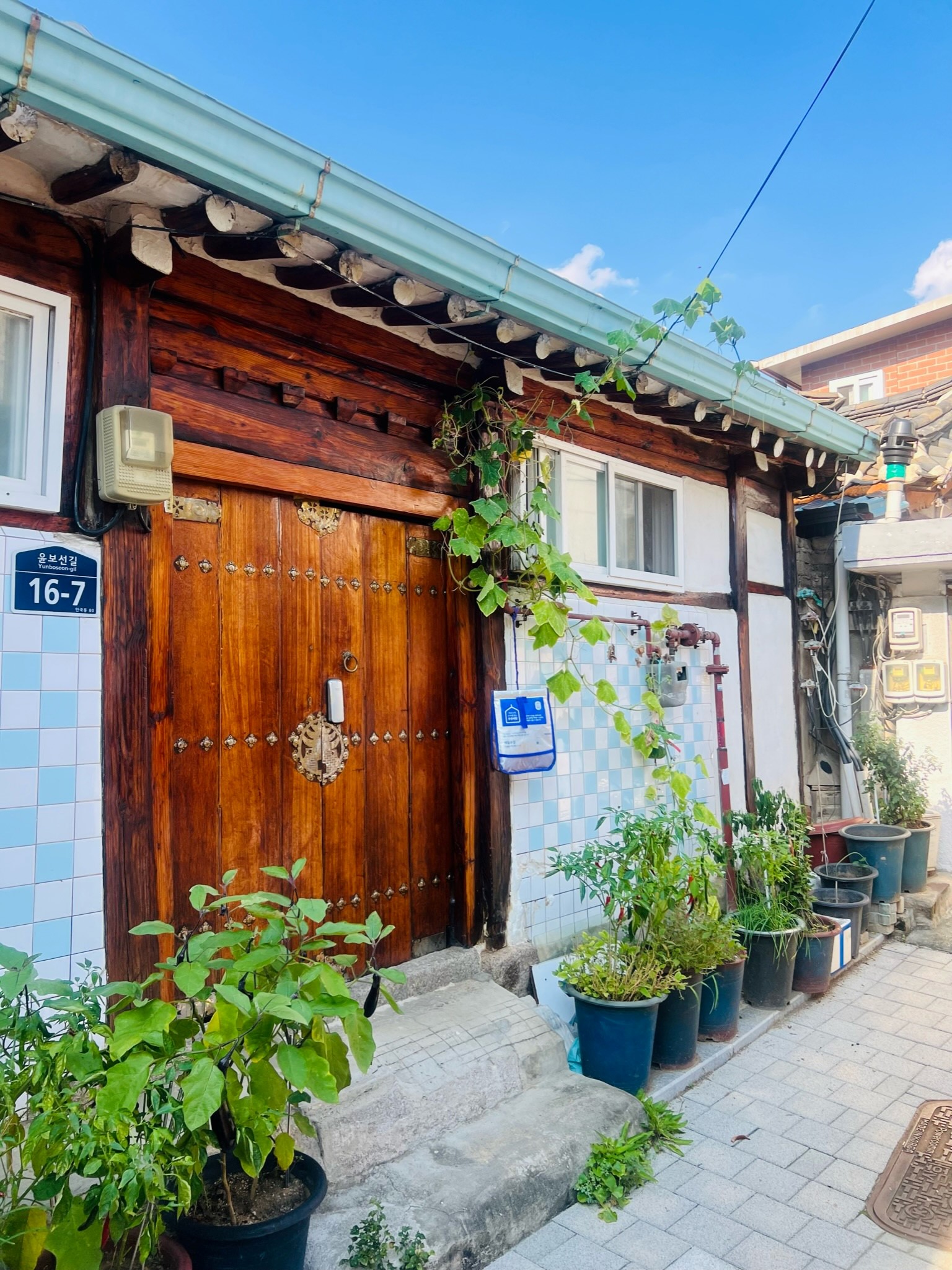Cultural Map of the International Residencies of BMKOES
Currently, the BMKOES is expanding towards Scandinavia and the Baltic countries and, through FREE AWAY, offers art residencies for both artists and curators at a freely selectable location. The studios in Helsinki, Finland (in cooperation with HIAP), and in Vilnius, Lithuania (in cooperation with RUPERT), are available to visual and media artists from 2024 on. FREE AWAY will take visual and media artists as well as curators to diverse destinations also from 2024 on.
It All Started with Rome – The Geographical Timeline of the International Residency Destinations of the BMKOES
Based on the scholarship for artistic studies in Rome (renamed “scholarship for further artistic education in Rome” in 1978) that each year funded stays in Rome for one or two Austrian artists from 1974 to 1978 and for three or four artists later on, the Arts and Culture Division developed the institutionalized International Residency Program in the mid-1980s. In the center of the Eternal City, close to Piazza Navona, the first independent studio abroad opened in 1985. Until 2017 it was shared by visual artists and, from 1988 on, also by photographic artists. But why Rome? For the artists and educated tourists (mainly from England) of the 17th to 19th century, Italy’s capital was a must-see on their Grand Tour to the great cultural sites of Europe. A more recent model was the German Academy which also set up its studio program launched in 1913 in Rome, at the Villa Massimo. In addition to those historic ideals, there were also practical reasons for Rome as a pioneer destination: “We received much support for the project from the Austrian embassy and the Cultural Forum in Rome, which, of course, made organization easier.”1
In 1985, Paris, another classic art metropolis, was added as the second destination of the Program – integrated into the studio program of the Cité Internationale des Arts, founded in 1965.
Studios
of the BMKOES since 1970
Accra, Ghana
144 La RdAccra
5° 33' 20" N, 0° 10' 14" W
Ghana
in cooperation with Foundation for Contemporary Art – Ghana (FCA)
Seoul, South Korea
3F, 74-18 Yulgok-ro 3-gil, Jongno-gu03061 Seoul
37° 34' 44" N, 126° 58' 59" E
South Korea
in cooperation with Art Sonje Center
FREE AWAY
Through FREE AWAY, the BMKOES radically expands the boundaries of its own program. Instead of making available specific studios, it allows artists and curators to freely select the place and date of their self-organized stay abroad. From 2024 on, Free Away will be awarded ten times a year, preferably for an art residency linked to a studio program or for a concrete project. In the first year, FREE AWAY supports art residencies in Greece, Japan, Lithuania, Italy, Greenland, Thailand and the Netherlands.

Vilnius, Lithuania
Vaidilutés st. 7910100 Vilnius
54° 44’ 35“ N, 25° 17’ 42“ E
Lithuania
in cooperation with RUPERT
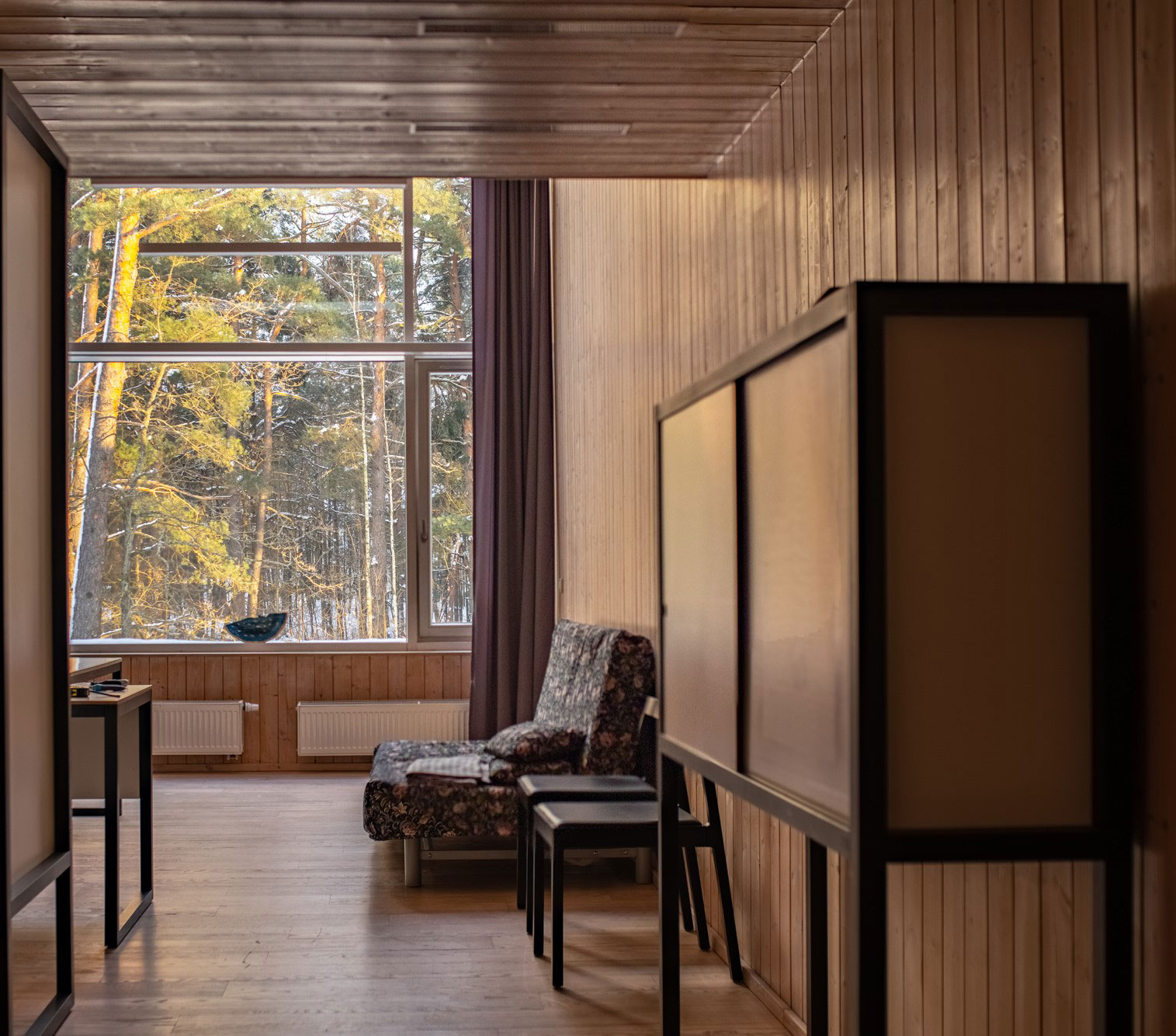 © RUPERT
© RUPERT
In 2024, the International Residency Program of the BMKOES expands its activities to the Baltic countries and makes available a studio in Lithuania’s capital Vilnius. The residency will be awarded once a year for a two-month stay and is affiliated with the interdisciplinary program of RUPERT. The live-in studio is situated in a spectacular wooden building that is managed as a big studio building and stands out by its special location: In the middle of a green area close to a small beach by the Neris River, but still not far from the city center, you can immerse into the cultural center of Vilnius as well as into the natural landscape of Lithuania.

Helsinki, Finland
Suomenlinna B 44–45, 00190 Helsinki andTallberginkatu 1, 00180 Helsinki
60° 08’ 38“ N, 24° 59’ 10“ E
Suomi
in cooperation with HIAP
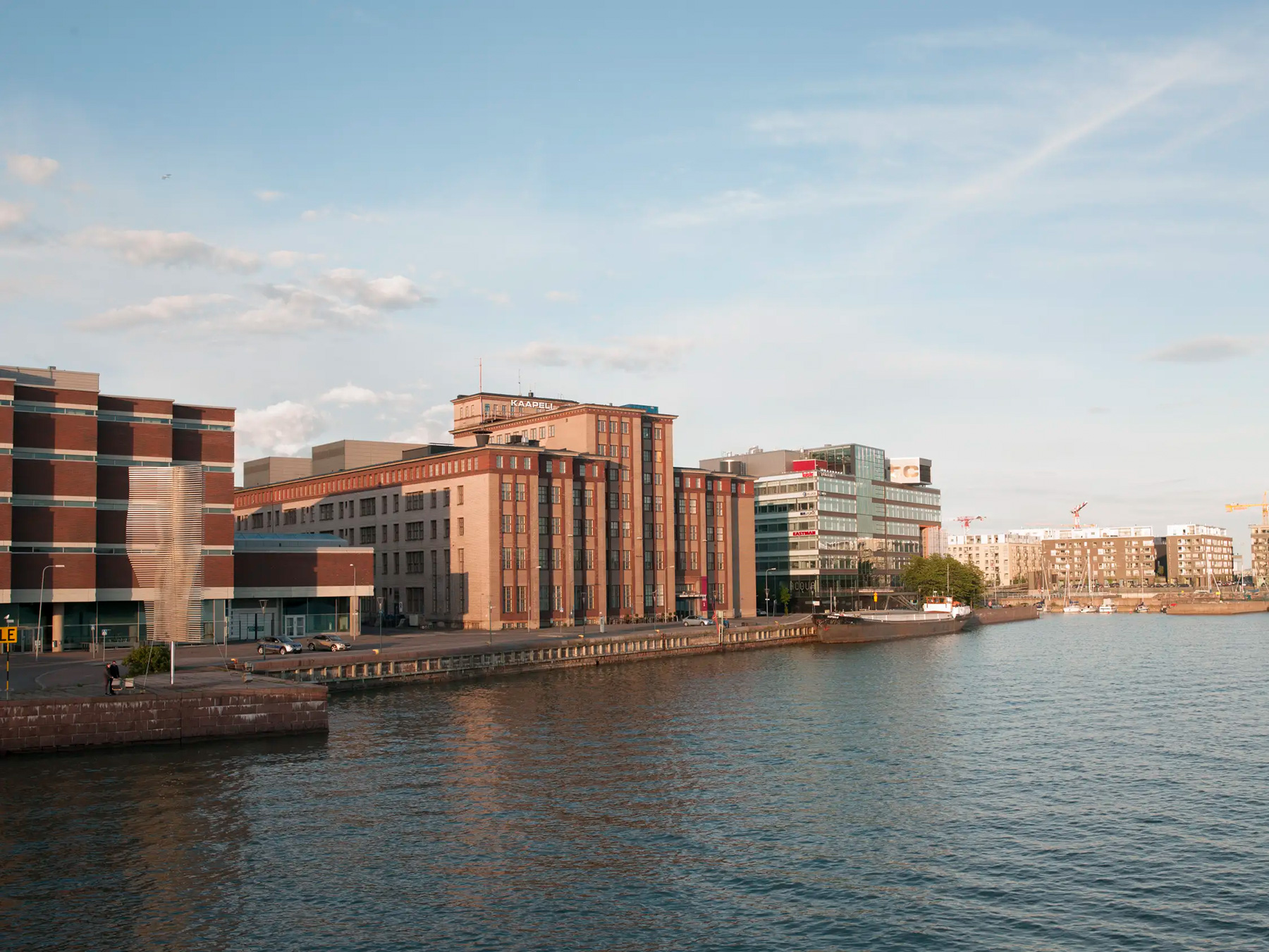 © Patrik Rastenberger
© Patrik Rastenberger
With HIAP (Helsinki International Artist Program) as its cooperation partner, the BMKOES offers art residencies in Finland from 2024 on. It alternatingly makes available a live-in studio at the Cable Factory, an industrial building dating from the 1950s in Helsinki’s center that was converted into Finland’s biggest cultural center with museums, galleries, etc., or another one on the small island of Suomenlinna. This Unesco World Heritage site houses several artist studios and can be reached from Helsinki’s Market Square by ferry in 15 minutes. The Helsinki International Artist Program provides technical, spatial and human resources to support interdisciplinary dialogue and the artistic development of the artists-in-residence.

Washington, D. C.
336 Randolph Place NEWashington, DC 20002
38° 54' 50" N, 77° 00' 03" W
USA
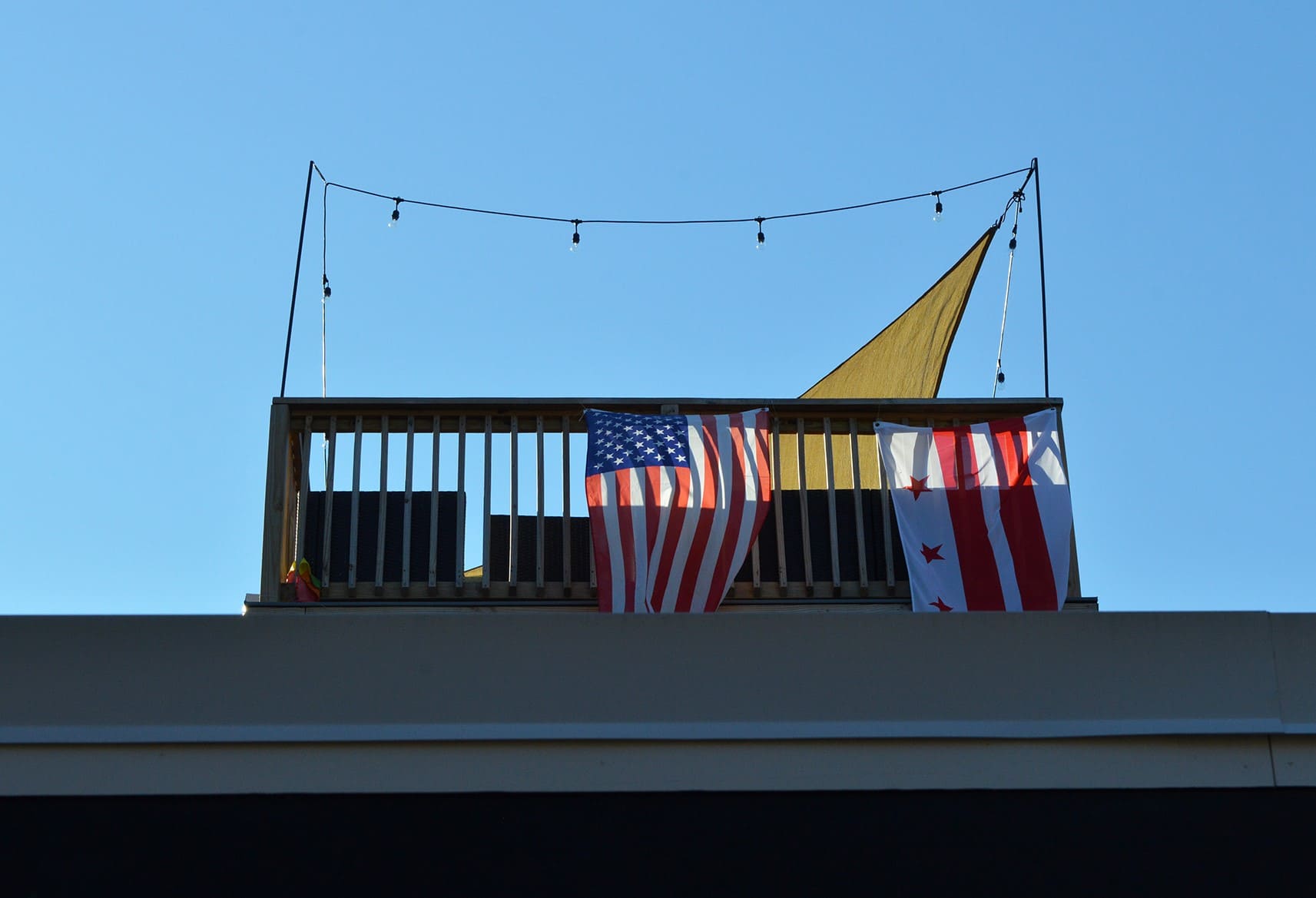 © Florian Raditsch
© Florian Raditsch
Sometimes new destinations open up for the International Residency Program at short notice — a case in point is the unique residency in the US capital city of Washington, D.C. Planned on the drawing board and situated between Maryland and Virginia, the capital is characterized by its imposing buildings as well as their important purposes. We all know the White House, the Capitol, the Supreme Court and the Pentagon – but what about the art scene in the American center of power that proclaims “Justice for all” on the city’s seal? Away Art Residencies allows artists to get first-hand exposure to the art scene of the Capital Region on Anacostia River and to study its structures and special features on site.
…Washington D.C. is full of contradictions,…has a lot to offer, and its location is truly strategic, with only a few hours' drive to many places in the region, such as New York City, Baltimore, Philadelphia and Richmond. The current residency studio is at STABLE in Eckington where many local artists work in a historical stable building converted into studios. […] The residency offered many wonderful opportunities, both professional and personal, and I am very grateful for this stay in D.C. that allowed me to meet so many wonderful people and to experience art and history here.

Herzliya, Israel
Yodfat 7Herzliya
32° 10’ 31“ N, 34° 49’ 03“ E
Medinat Jisra’el
in cooperation with The Herzliya Artists’ Residence
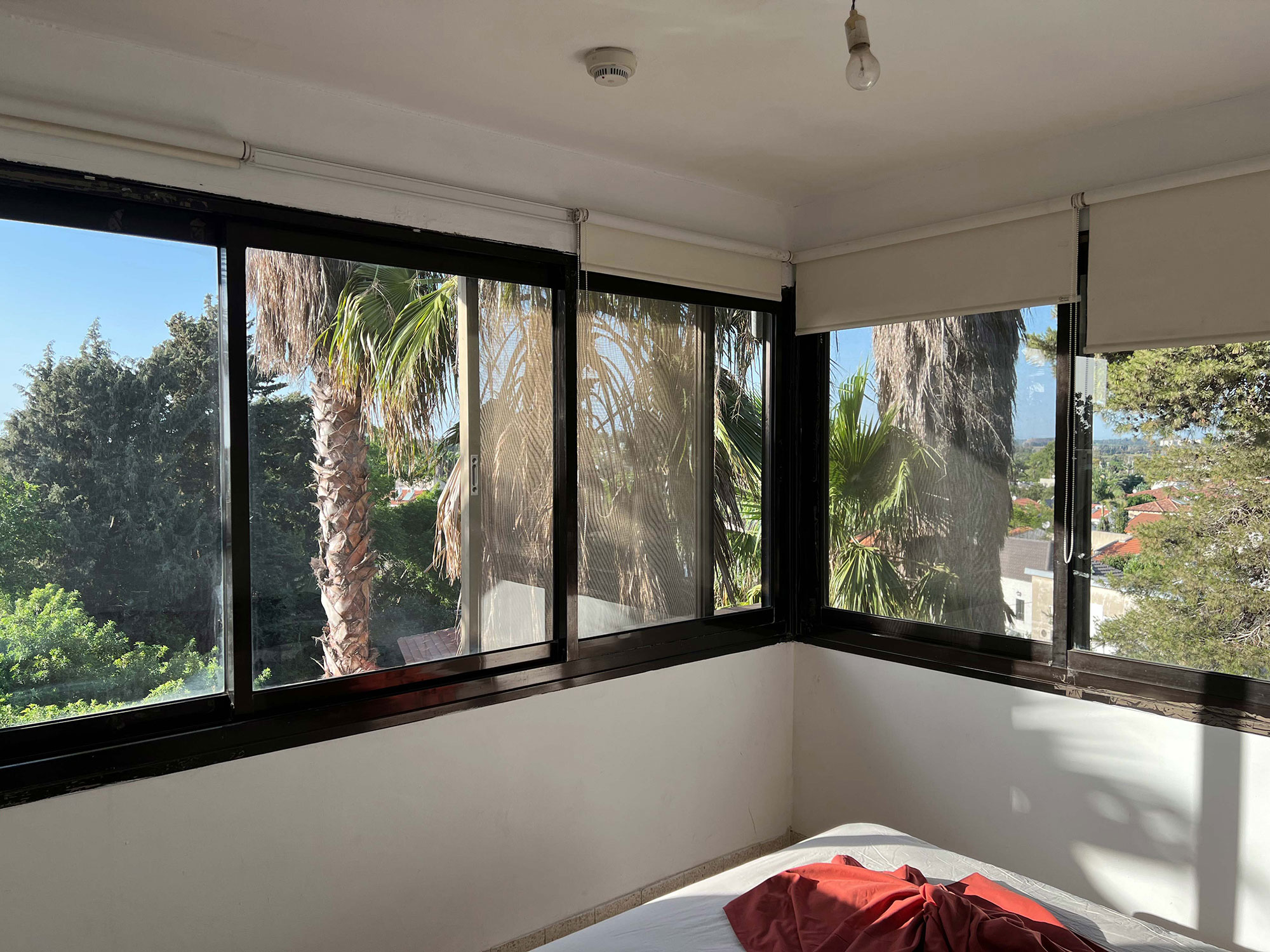 © Alexandra Berlinger
© Alexandra Berlinger
At Herzliya near Tel Aviv, the first destination was established in the Middle East in 2018. The studio is situated in an apartment building with further studios for national and international artists and is affiliated with the Artists’ Residence Herzliya (founded in 1995) that organizes exhibitions, artists’ talks, tutorials and English-language support for the artists. From quiet Herzliya, it takes roughly 35 minutes by public transport to the lively center of Tel Aviv and its white Bauhaus buildings. The way to the beach is much shorter – only ten minutes. What artists need to get used to: On Shabbat (from dusk on Fridays to sunset on Saturdays), public life observes a strict day of rest in Israel!
Designed as a labyrinth in which you can get lost, the world’s formerly biggest bus station is situated in Tel Aviv. It was built for one million passengers per day […], roughly one-third of the population at the time when the station was built. Up until today, it has not really worked out – a bad investment through 30 years of construction […] The building offers everything [today]. […] For me, the station situated in the middle of the city mirrors so many aspects of the country: many small islands and corners that are all different, do not fit together and still work.

Moscow, Russia
CCI Fabrika 18, Perevedenovsky side-street105082 Moskwa
55° 46’ 47“ N, 37° 41’ 23“ E
Rossija
in cooperation with the Centre for Creative Industries “Fabrika“
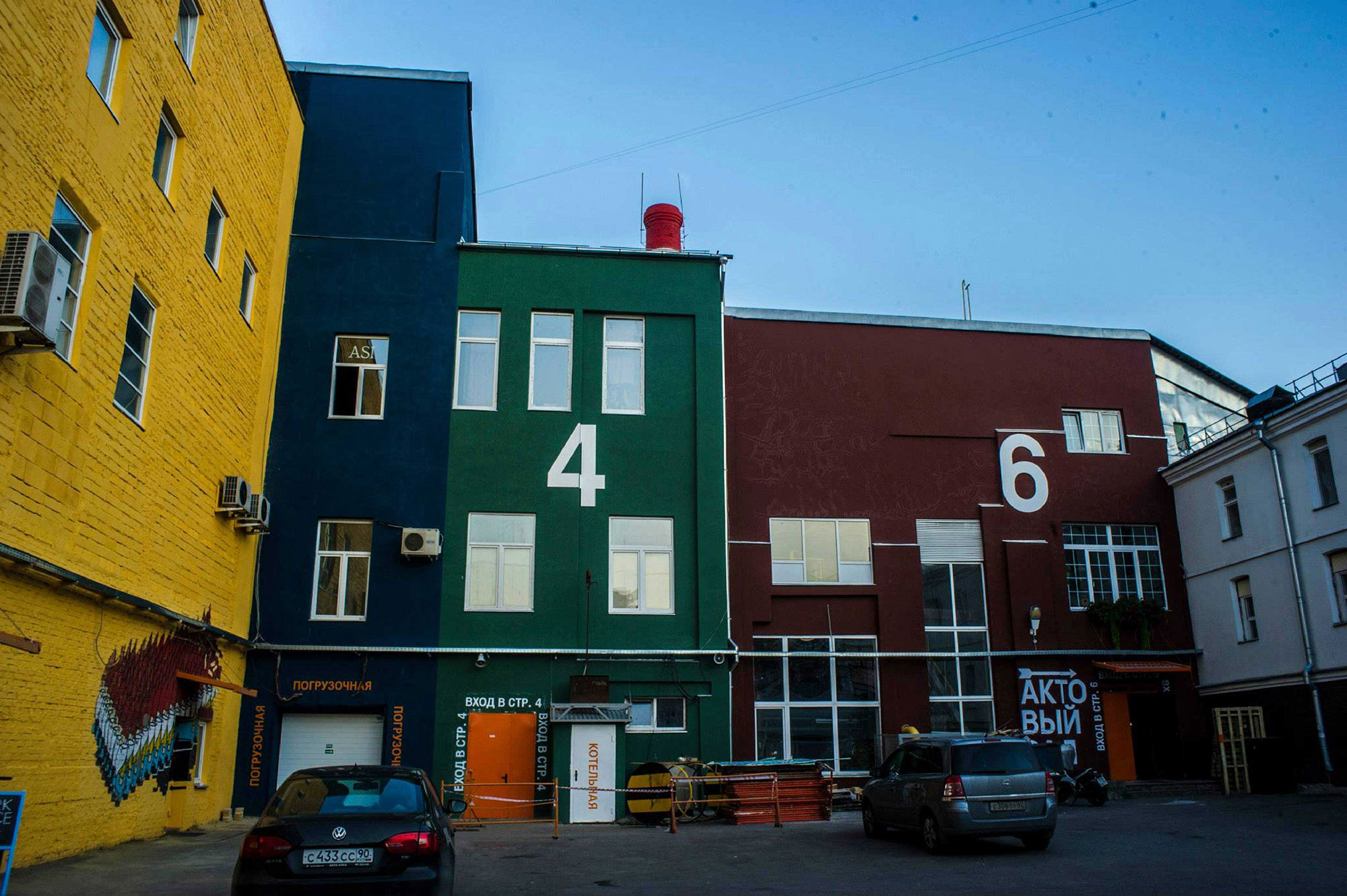 © Fabrika
© Fabrika
Huge halls and a maze of rooms opened up behind the walls of a former paper factory that had been converted into CCI Fabrika, The Center for Creative Industries in 2005. In addition to residency studios and exhibition areas for fine arts, there were event spaces for dance, performance, theatre, film and music. Situated at the edge of the historical city center, the institution served as a platform for contemporary art, promoted international exchange and had become a hotspot for exciting productions – hence, Fabrika provided the location and program for the two-floor live-in studio of the BMKOES. To explore the city, you just had to take the metro – it operates at minute intervals, has impressive stations and allows you to discover the megacity easily. It only took 30 minutes from the residency studio to the Red Square and, moving away from the center, around 15 minutes to the vast Sokolniki Park (Moscow’s “green Prater”).
Moscow exceeded my expectations. It is a huge, buzzing metropolis. […] Even thirty years after the Soviet Union broke up, its vestiges can still be seen everywhere […] everything revolves around scale and splendor. The city is very European, but different from anything you see in the rest of Europe. I believe that I also learn from my stay. I grew up on the side of the Iron Curtain that was dominated by Moscow. When I was a child I played with Soviet toys. Many things in this city feel like a look into the past for me. […]

Brussels, Belgium
Avenue van Volume 3541190 Brussel
50° 49’ 28“ N, 4° 19’ 34“ E
België
in cooperation with the WIELS Art Center
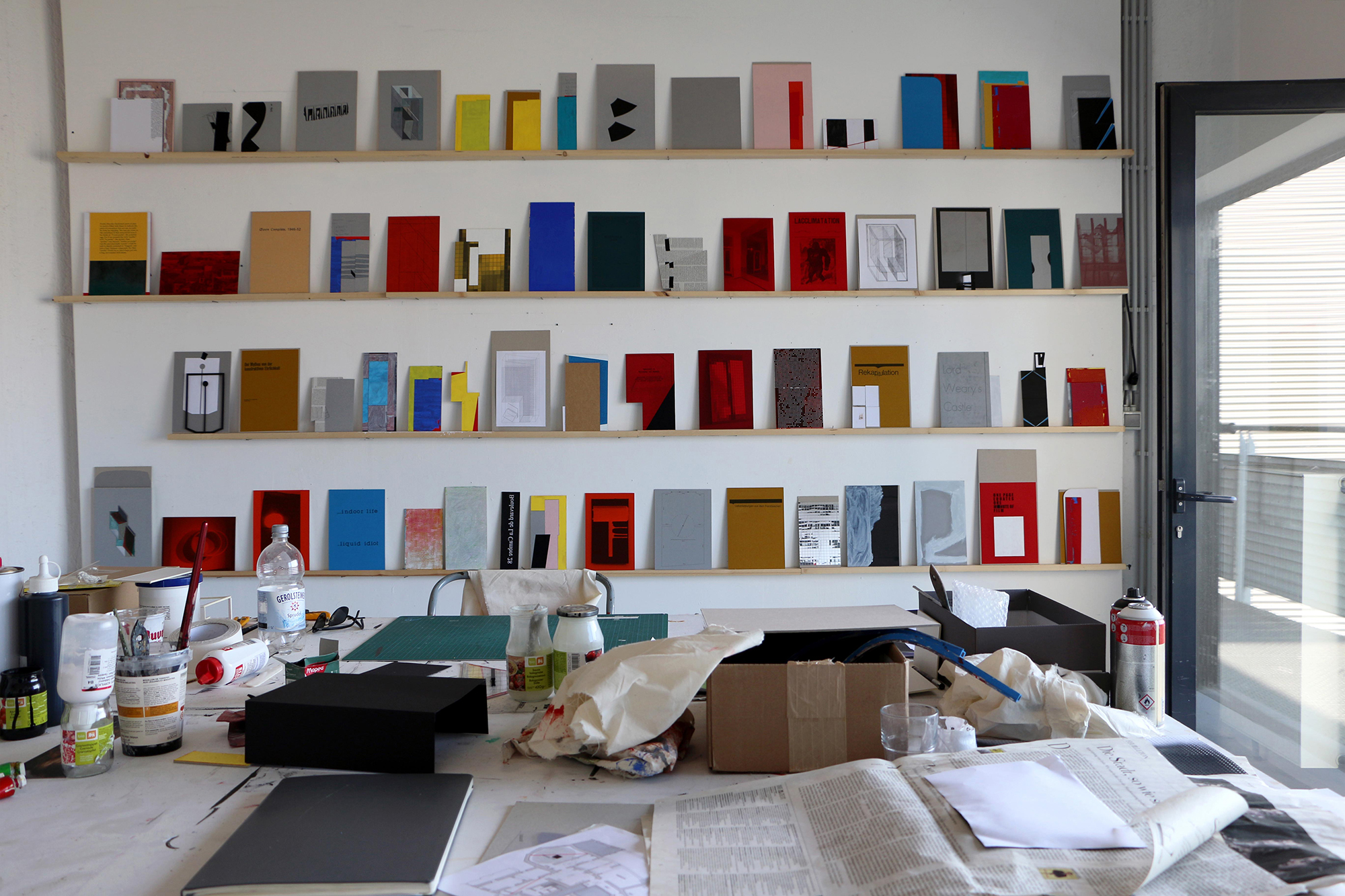 © Gregor Eldarb
© Gregor Eldarb
At WIELS, Centrum voor Hedendaagse Kunst, Austrian artists were offered a residency in Brussels. Situated in a former brewery, the Blomme Building, WIELS was an eye-catcher in the urban architectural fabric and had developed into a hotspot of the Brussels art scene with its rich program of events and exhibitions. The residency was managed by artists who ensured lively exchanges among the nine international artists-in-residence by organizing weekly tutorials, artist talks, open studios and excursions. At a distance of twelve minutes from the studio building (by tram), the artists were provided with a small residency apartment at Boulevard du Midi 57 box / boîte 33.
Thanks to the combination of inspiring support by the mentors, integration into the arts scene of WIELS as an institution, the dialogue with my fellow artists-in-residence and the work opportunities provided at a wonderful studio in the middle of multi-facetted Brussels, a particularly enriching atmosphere developed for my artistic work at WIELS.

Banff, Canada
107 Tunnel Mountain DriveBanff, Alberta Canada T1L 1H5
51° 10’ 21“ N, 115° 33’ 43“ W
Canada
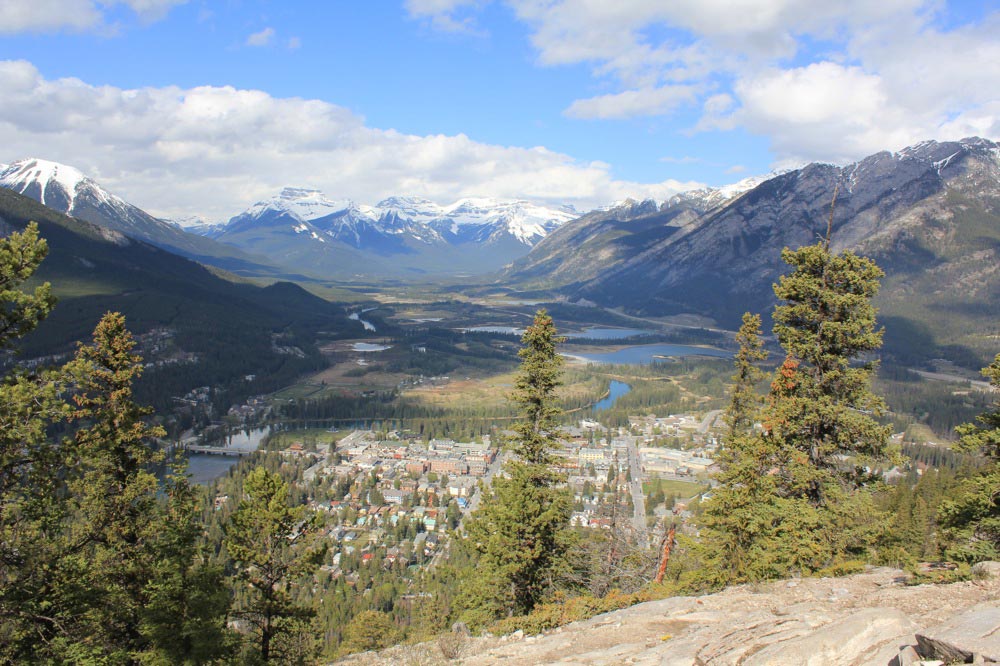 © Katrin Hornek
© Katrin Hornek
The Banff residency was the epitome of working in seclusion. The modern architecture of the Banff Centre is set in the middle of the picture-perfect idyll of the Rocky Mountains and the Bow River. Since 1993, it has offered residencies to creative people from all over the world – nowadays several thousand per year. A few studios are located at the Leighton Artists’ Colony in the middle of the national park (nine wooden houses designed by Canadian architects to meet the needs of different art forms). This residency was exclusively reserved for media artists. Applicants had to propose a specific project. A jury of the BMKOES submitted a short list to the partner organization, while specific places were awarded by the Banff Centre. The BMKOES ended this cooperation due to a re-orientation of the Banff Centre in 2022.
I saw a bear and many squirrels. I heard the trains in the morning and went hiking. Lonesome Lüth, wapiti, my friend!

Istanbul, Turkey
Firuzaga Mahallesi, Süngü Sokak, No. 1Cihangir, Beyoglu, Istanbul
41° 01’ 47“ N, 28° 58’ 54“ E
Türkiye
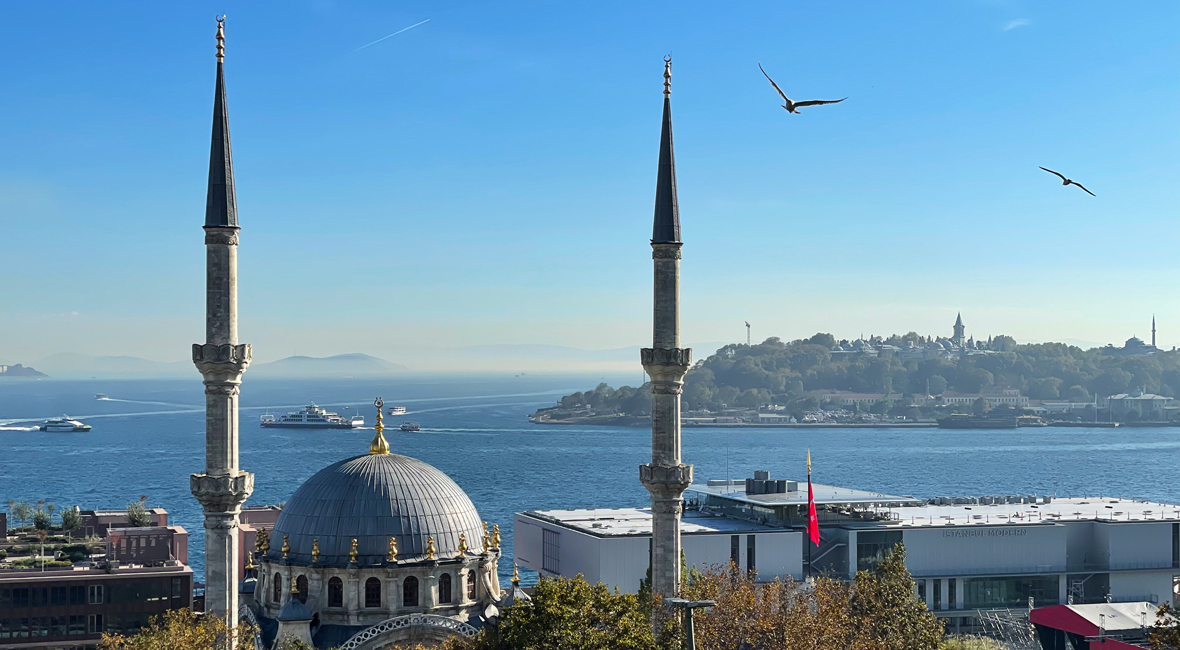 © Enar de Dios Rodríguez
© Enar de Dios Rodríguez
The live-in studio is situated between Taksim Square and Galata Bridge in Cihangir Beyoğlu, one of the oldest districts in the European part of Istanbul. Beyoğlu is considered the center of modern Istanbul and is characterized by numerous buildings dating from the turn of the century as well as the hustle and bustle between shops and restaurants. In response to the anti-government protests that started in 2013, the state of emergency was declared in Turkey in 2016. Ever since, grant recipients (just like all residents) have had to expect intensified identity checks and are requested to be aware of their limited civil rights as visitors.
[…] when the window is open, the scent of çay, coffee, cigarettes or the subtle Bosporus breeze enters the studio. In an Oriental rhythm that is familiar to me, I sometimes hear the muezzin bawl or sing. With this daily routine set in a predominantly Muslim country, I feel close to the city in a gentle and cozy way.

Yogyakarta, Indonesia
Pelem Sewu, RT 06, Pangguanharjo,Sewon, Bantul, Yogyakarta
07° 50’ 27“ S, 110° 21’ 26“ E
Indonesia
Yogyakarta used to be the most remote destination in the International Residency Program of the BMKOES for a long time – the capital of the eponymous sultanate is as far as 11,000 km away from Austria. Amidst the island paradise, the university city located at Java’s southern coast surprised with the densest arts and culture scene of Indonesia (and maybe even of Southeast Asia as a whole): Historic temples, the spiritual and courtly culture of Java as well as Mount Merapi, a volcano shrouded in myth, are among the tourism highlights of the region. Working at this far-away destination needed to be prepared well: Mosquito nets and a fully charged mobile phone were indispensable for coping with everyday life. High humidity and steep return transport costs were an important factor influencing the selection of working materials. The geckos living in the garden frequently paid visits to the studio that was discontinued in 2019.
[...] Winding down and becoming aware of your own tourist economic tracks [...]. Free from constant self and time optimization and from everyday financial worries and strains that usually circle around the artistic process. Having time for art or production, for reading and learning 24/7 without the permanent, looming shadow of my second or third job is a tremendous luxury that can unleash immense energies and ideas. After all, ideas for artistic works are not only born from constant hyper-productiveness.

Beijing, China
The Dongbianmen WatchtowerChangwenmen District, Beijing 100600
40° 01’ 04“ N, 116° 30’ 21“ E
Zhōghuá Rénmín Gònghéguó
in cooperation with the Red Gate Gallery
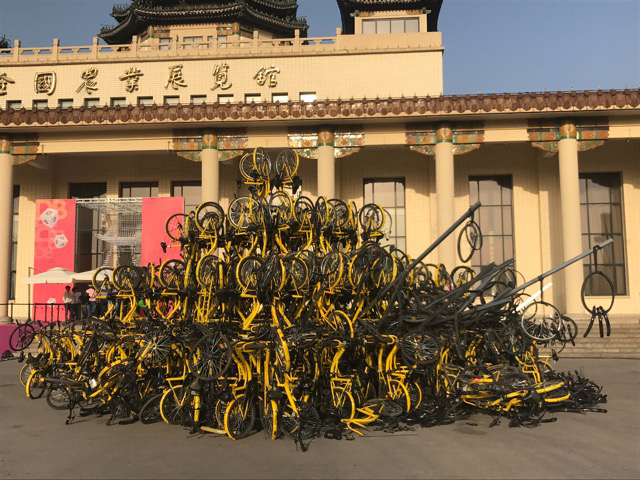 © Dejan Dukic
© Dejan Dukic
In Feijiacun – located north of Beijing and called an “artists village” – the spacious, quiet studio was situated in a compound with other residency studios of the Red Gate Gallery (RGG) as well as studios of local artists. From the guarded courtyard street, China’s ubiquitous culture clash and depletion of long-established structures becomes visible: Glossy skyscrapers rise next to slum-like dwellings. While everybody uses high-tech devices to communicate, urban services (waste collection, hot water and power supply) have ample potential for development. The Beijing studio offered real insights into today’s China and, with RGG, a supportive cooperation partner providing help not only in the arts scene but also in the underground jungle.
...beijingIlove you...
During the first month, I was out and about every minute to explore the city together with my colleagues. We went to each and every exhibition, each and every museum, to Tiananmen Square, to the Great Wall, had a beer in the center in the evening, tried all kinds of dishes (including, indeed, pigeons, veal esophagus, duck hearts, pork skin soup, etc.…), strolled through Caochangdi and the 798 Art District, and did not let a day go by without having heard or seen something new…

Tokyo, Japan
6-30-3, Higashi OguArakawa-ku, Tōkyō
35° 44’ 54“ N, 139° 46’ 24“ E
Nihon-koku
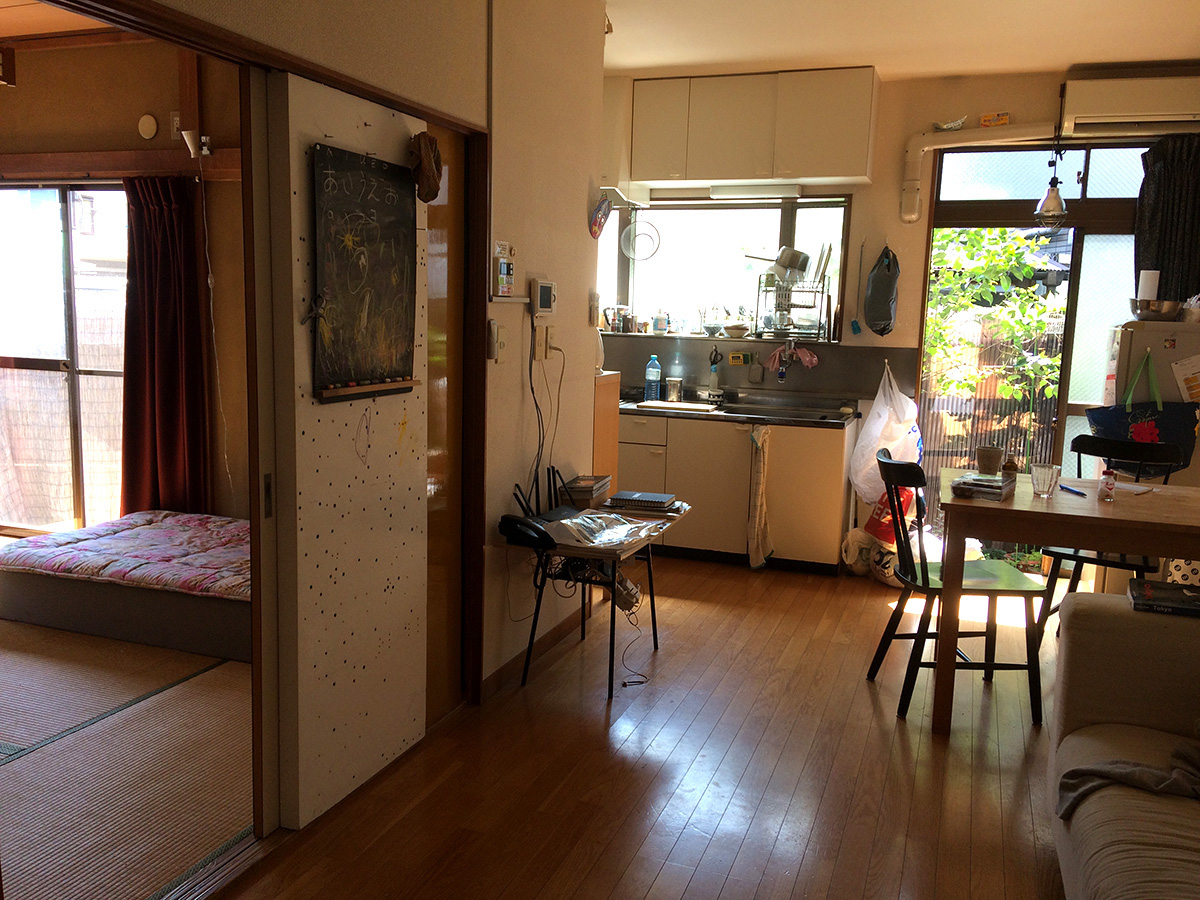 © Katharina Gruzei
© Katharina Gruzei
The BMKOES describes its residency studio in Tokyo as a tranquil oasis with good public transport connections to the center. The district where it is located is Arakawa which coincidentally has a twinning agreement with Vienna’s Donaustadt district and is characterized by residential buildings and educational institutions. Tokyo, as a metropolitan region with Yokohama and its 38 million inhabitants, is still the largest city in the world, never stands still and overwhelms visitors with a motley mix of manga hype, business mania and thousands of years of art history. Where can you find the art highlights in Tokyo and can you avoid getting “lost in translation”?
Dos in Tokyo: Looking down on the city from the 53rd floor of the Mori Art Museum or from the 45th floor of the Shinjuku city hall, getting your hair cut at 1,000 yen (approx. 8 euro) in a cut-only shop, standing between the salaried people and slurping a soup in the snack bars, taking an interest in temples and shrines, exploring the antiquarian bookshops in Jimbocho, learning by heart the most important Japanese phrases, especially ‘iranai/daijobu desu’ (no, thank you/I don’t need this/I’m fine), learning to write your name in katakana (you are often asked to do so), buying the Seishun 18 Kippu ticket and riding the regional trains along Japan’s coasts, rice fields and Mount Fuji, taking the Shinkansen at least once, in summer hiking up Mount Fuji, sleeping in a cabin half the way up, looking down from the summit at sunrise and eating cup noodles for breakfast…

Nanjing, China
22 Hankou Road, Gulou District210093 Nanjing, Jiangsu
32° 03’ 12“ N, 118° 46’ 57“ E
Zhōghuá Rénmín Gònghéguó
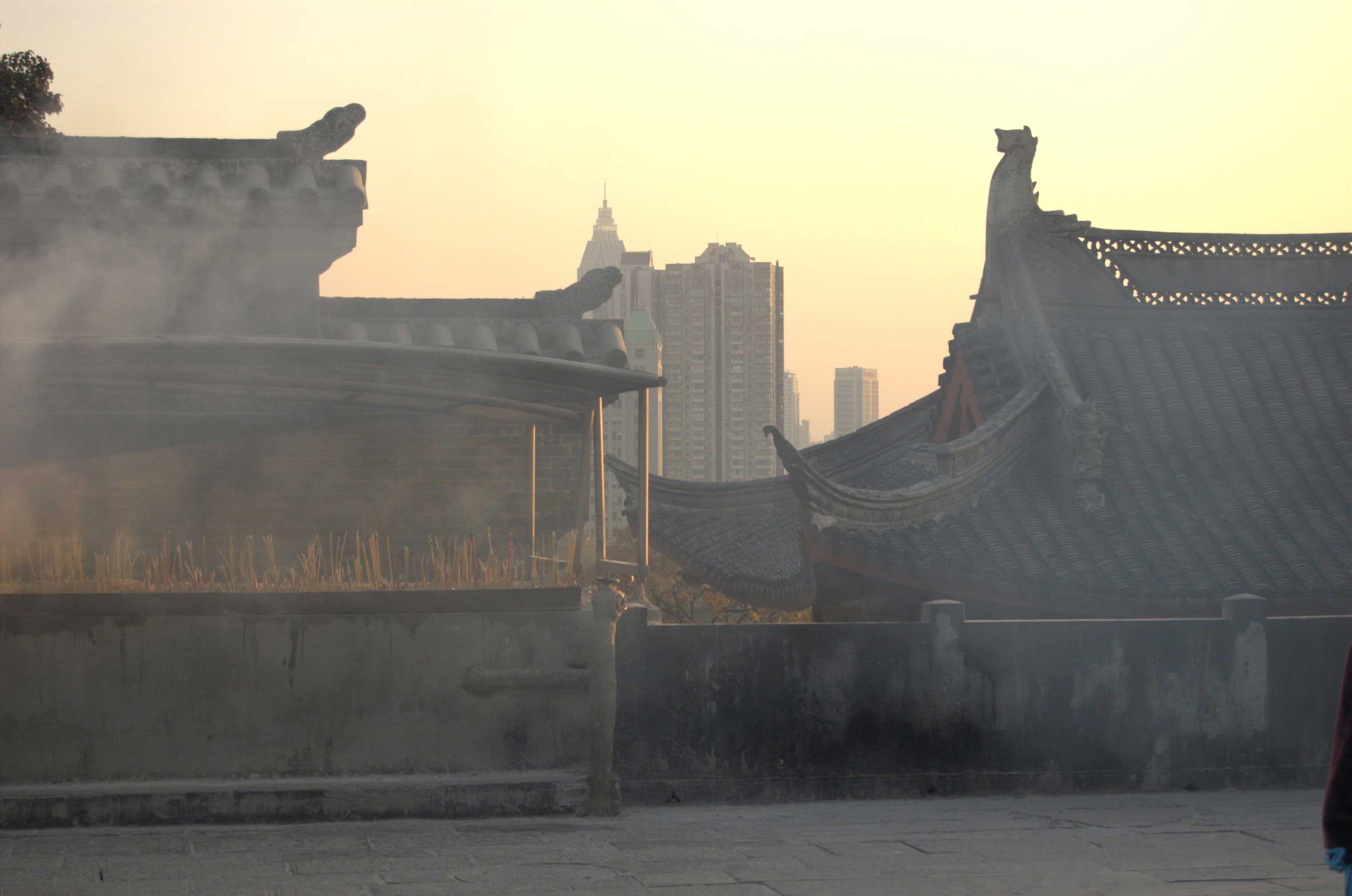 © Gerald Nestler & Sylvia Eckermann
© Gerald Nestler & Sylvia Eckermann
Nanjing, the capital of the Jiangsu province in eastern China, is situated 300 km upstream of Shanghai. In the 14th and 15th century, the city was the center of the Ming dynasty, which is evidenced by many historical buildings and monuments (the Nanjing or National Central Museum as well as the Nanjing Library are among the most important collections in China). The residency resulted from an exchange with Chinese artists and was organized in cooperation with the Art Institute of Nanjing University (today’s Academy of Fine Arts) that dates from the 3rd century and, thus, is considered to be the oldest educational institution of China.

Shanghai, China
98, Zhenning Road, Jing’an DistrictShanghai 200040
31° 13’ 10“ N, 121° 26’ 12“ E
Zhōghuá Rénmín Gònghéguó
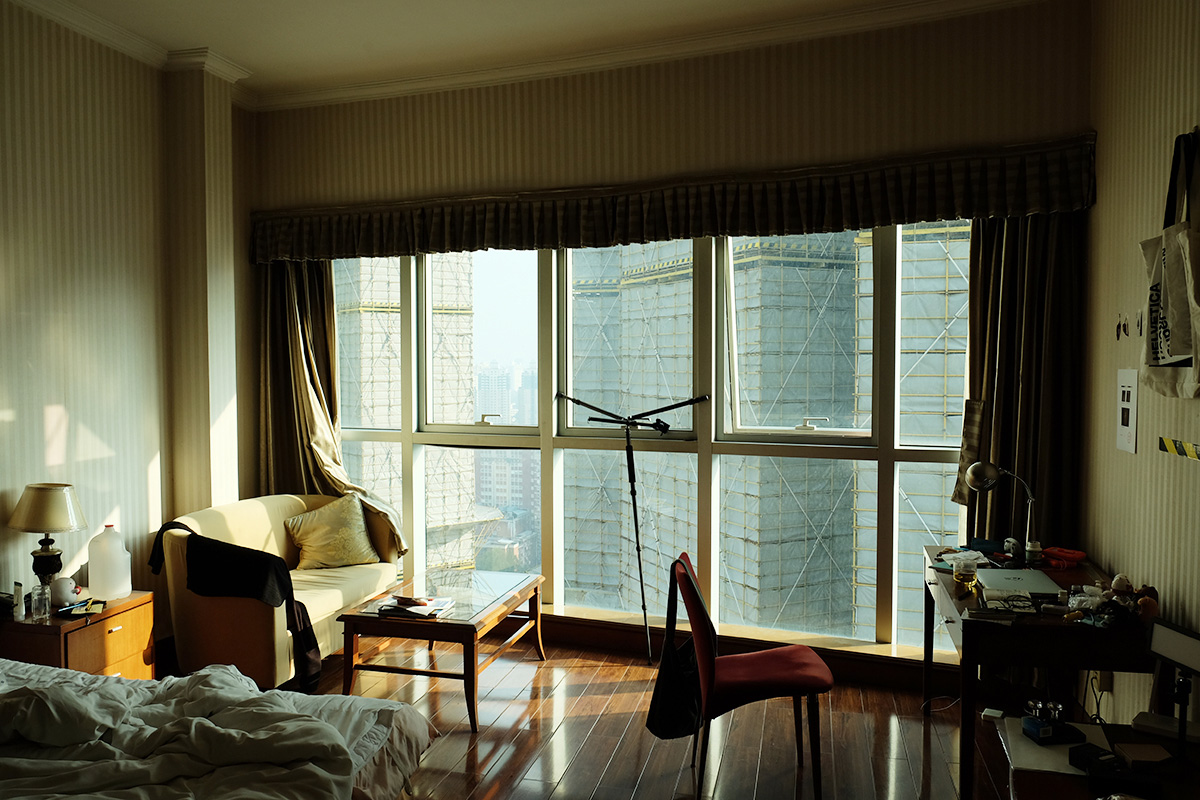 © Franz Schubert
© Franz Schubert
La Residence is the name of the skyscraper situated in the hip Jing’an quarter that houses the live-in studio that is made available to two artists once a year (at the same time). It is linked to the program of the Shanghai Theatre Academy that can be reached on foot, organizes exchange programs with 30 countries and is considered a performing arts institution. This brings many practical advantages for the artists-in-residence – they can use the workshops, additional rooms, canteen and fitness center, borrow equipment and attend performances for free so that there are many synergies. A smartphone is an absolute must for navigating the boomtown – and also for getting up-to-date air quality data based on which the artists-in-residence should organize their work days.
… For Shanghai, the 30 m² apartment (or ‘suite’ according to the doorplate) on the 29th floor is relatively large and I had the good luck – this was an exception – to stay at the apartment alone… thanks to a wall-to-wall window front, it has very agreeable light and provides a view of twin towers surrounded by scaffolding that mark out impressive sections of the cityscape. You can hardly ever escape noise in big cities in China.

Mexico City, Mexico
Sierra Tarahumara Ute. 42011000 Ciudad de México
19° 24’ 51“ N, 99° 13’ 36“ W
Estados Unidos Mexicanos
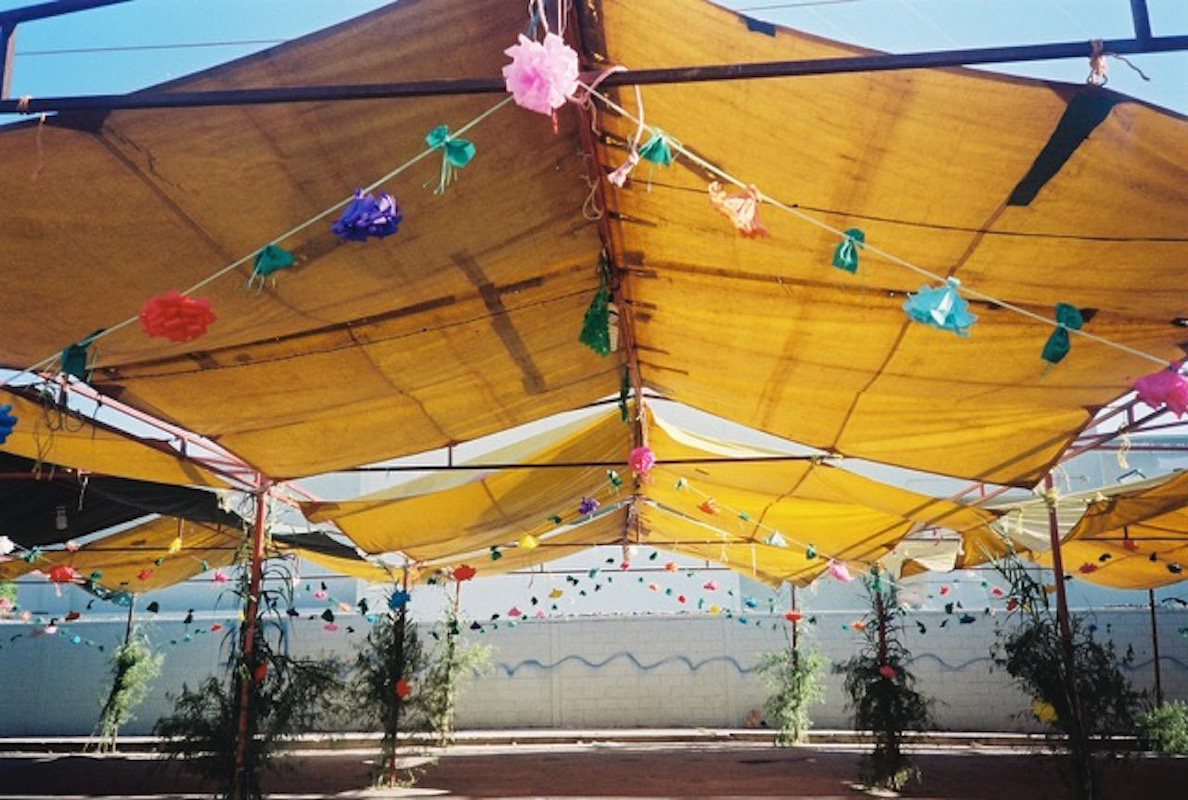 © Marlene Hausegger
© Marlene Hausegger
A bungalow situated in the garden of the Austrian Embassy and Cultural Forum served as a studio for the residency in Mexico City. The noble address had the advantage that the artists were well networked and lived in a very quiet and secure place, albeit a bit in “splendid isolation”. Basic supplies were available nearby at a weekly market opposite the Embassy and it took 45 minutes to go to the city center by public transport or taxi. Apart from small change, you should take along plenty of patience when you are on the go – punctuality is not taken so seriously here. Between the wealth of art spots, historical sites, museums and the hustle and bustle, the colorful city also offers a lot of green areas for lingering and the “Centro Austriaco”, the very active association of Austrians living in Mexico.
The city and its colors, celebrations, air pollution and ambiguities. The terrace on the premises of the Embassy, books and lizards. The people are as short as me. My imagination is much greater. The underground publishing houses, artist-run spaces, the spirit of the beat generation. The road trips. Matriarchy in Tehuantepec. Imbibing the sun.

Chengdu, China
Southwest Jiaotong University610031, Chengdu, Sichuan
30° 46’ 19“ N, 103° 59’ 05“ E
Zhōghuá Rénmín Gònghéguó
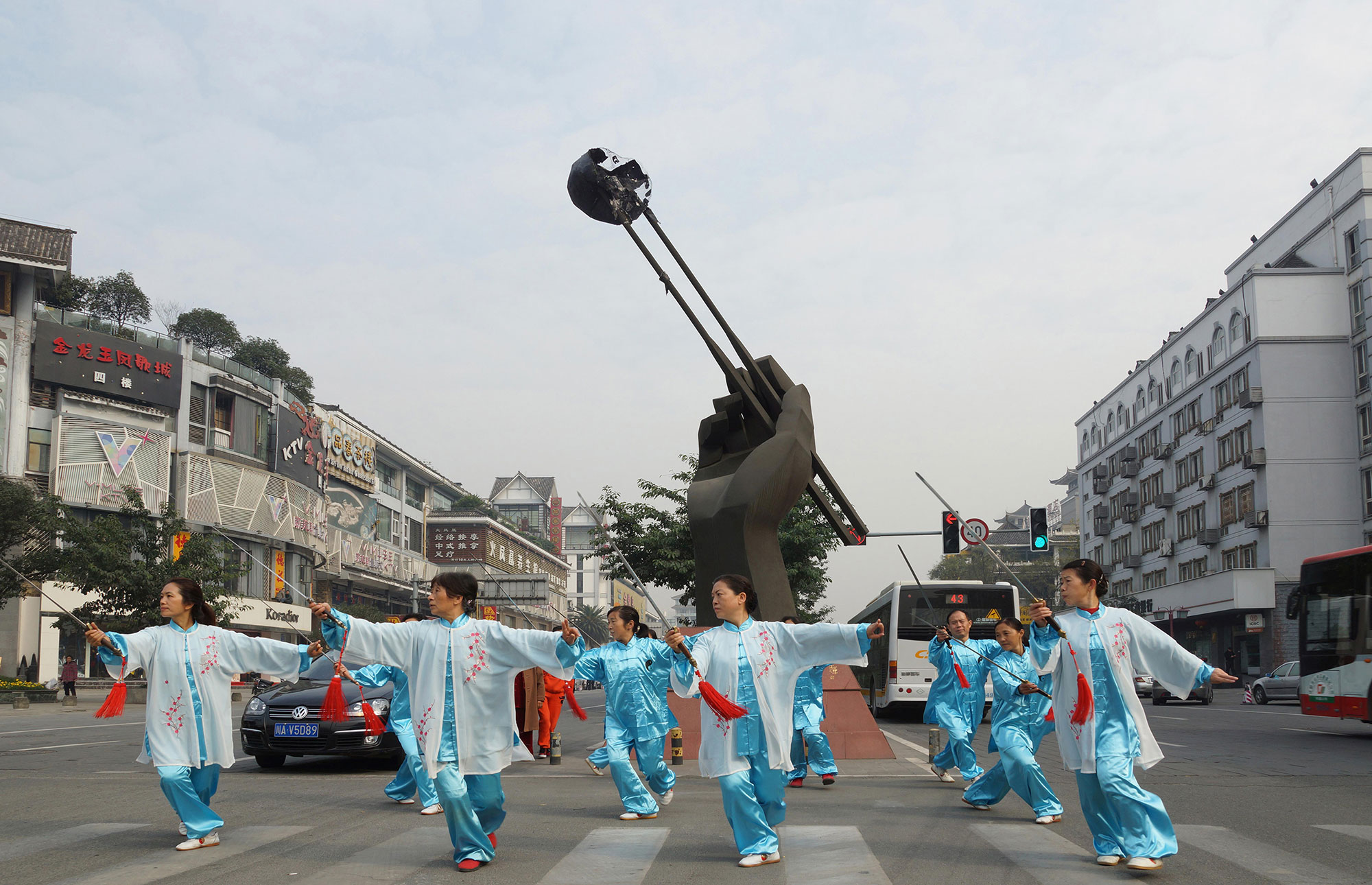 © Leopold Kessler
© Leopold Kessler
The Chengdu residency, active from 2000 to 2014, was organized in cooperation with Southwest Jiaotong University and its art department (specialized in ancient printing techniques). The artists lived in a two-room apartment overlooking a lake, while the simple 15 m² studio was situated on the University’s campus. Chengdu is the capital of the Sichuan province located in the southwest of China and, with a population of 15 million, it is a real metropolis, but only the fourth biggest city of the huge country. The – at times, strong – presence of the International Residency Program in China can be explained by the committed efforts of a Chinese university professor staying in Vienna to intensify cultural exchange between China and Austria.
Chengdu probably is the mellowest megacity of China. Here and in neighboring Chongqing, you experience China in a more intensive and yet more amiable way than in Beijing or Shanghai. With its numerous parks and teahouses, I always found Chengdu to be relaxing in comparison with other cities.

New York, USA
1040 Metropolitan Avenue, Apt 218Brooklyn, NY 112111
40° 42’ 52“ N, 73° 56’ 04“ W
USA
in cooperation with ISCP
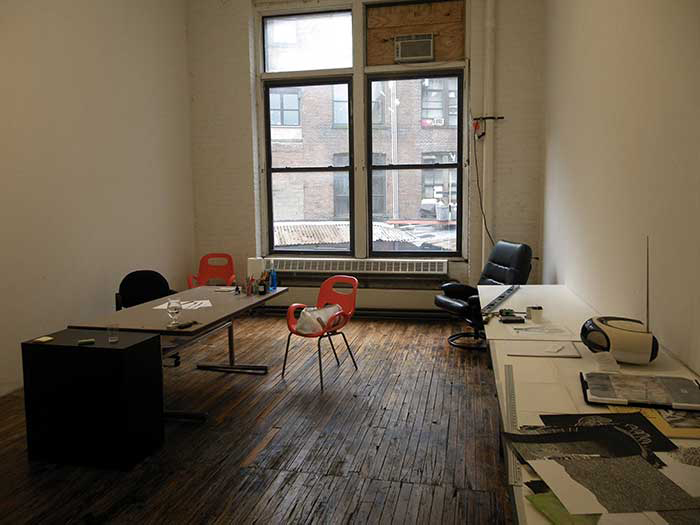 © Moussa Kone
© Moussa Kone
1040 Metropolitan Avenue, Apt. 218, Brooklyn: At this address in New York, a studio has offered residencies to visual and media artists since 1998. Linked in organizational terms to the Brooklyn-based ISCP, founded in 1994, with its comprehensive program of studio visits, critics meetings, museum visits, lectures and presentations, it allows the artists-in-residence to really immerse into the local scene and to engage in lively exchanges with other national and international colleagues. Forty minutes away, they are accommodated in Manhattan’s West Village at 255 W 10th Street, # 3 FN. The apartment that has a kitchen-living room, bedroom and bathroom is situated on the second floor of a typical brick townhouse close to the Hudson River Park, the Whitney Museum and numerous hot galleries, restaurants, bars and shops.
ISLAND, TO STRAY, FRAGMENT, BOOK, MATCH, GRID, MAPPING, SCAN, FIRE ISLAND, PANEL, OUTDOOR, EXPERIENCE, TOPOGRAPHY, QUEERNESS, MEDITATION, SHIFT, INDOOR, MEAT, NYC INFERNO, ENTERTAIN, CENTER, CARLOS, A HOUSE, MARBLE, ORNAMENT, RACK, BRENT, TO FOLLOW, TO FOLLOW BACK, MARK, ONYX, SLIDE, STEFAN, THE PIERS, MIES, TRACK, ENTRANCE, MODERNISM, DOWNTOWN, LOBBY, MIRROR, RUSH, UNCUT

Česky Krumlov, Czech Republic
Atelier 4, Siroká ul. 70-72, Mezinárodní38101 Česky Krumlov
48° 48’ 38“ N, 14° 18’ 49“ E
Česká republika
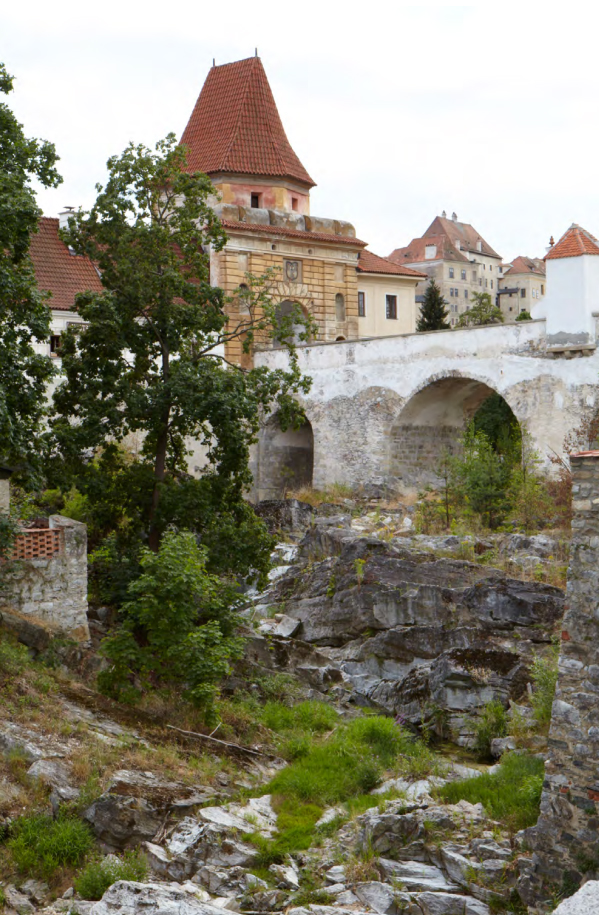 © Manuela Mark
© Manuela Mark
In cooperation with the international studio program of the Egon Schiele Art Centrum, a residency place was provided in Český Krumlov from 1995 to 2017. In artistic terms, Český Krumlov is not a hotspot – it was selected as a place that permits focused work in a quiet environment. Remote from pervasive distractions in everyday life, the tower-like building with its 9 m tall studio room located on the banks of the Vltava river offers seclusion, tranquility and a lot of “upwards potential”. Up to the 1940s, beer was brewed in the building complex. The proximity to Vienna, however, meant that the residency was not always used as a real timeout.
… the studio – a mighty, tower-like room; focused occupation with my work – without any distractions but provided with financial security: working, going for a walk in the town, discovering something new – continuing to work – highly focused and very intensively. Using the great studio, working and finding my niches in the small town!!

New York, USA
1040 Metropolitan Avenue, Apt 218Brooklyn, NY 112111
40° 42’ 52“ N, 73° 56’ 04“ W
USA
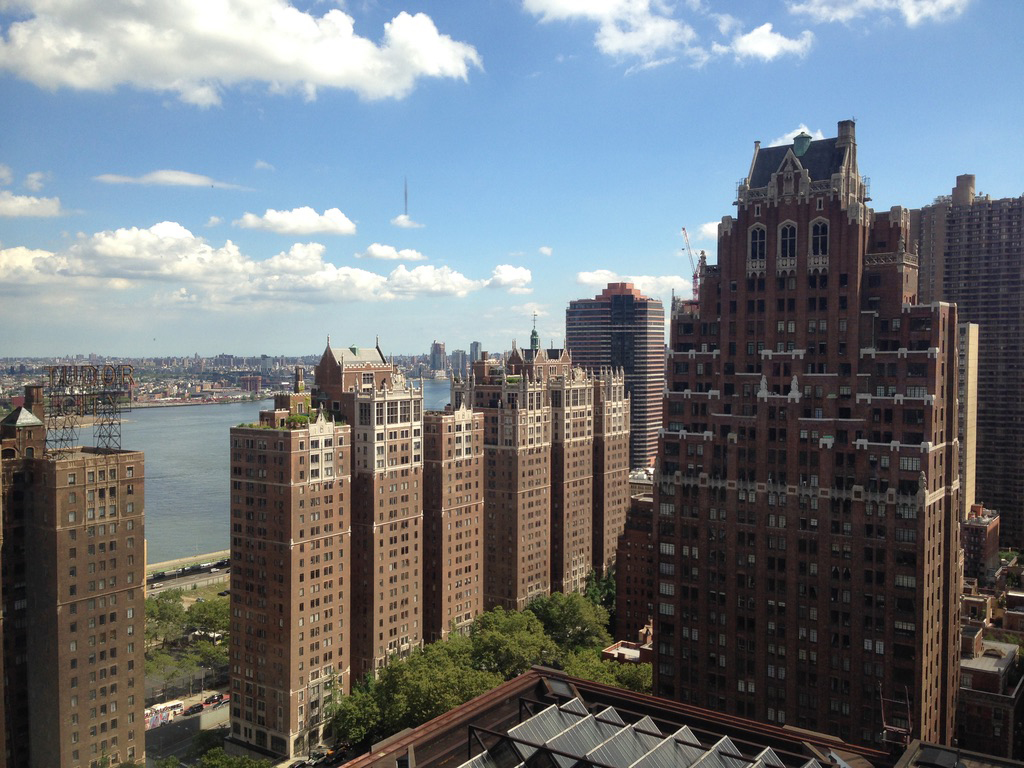 © Alexandra Grausam
© Alexandra Grausam
From 1994 to 2018, this art residency for photographers offered an independent live-in studio but now is organized in cooperation with the ISCP – studio, gallery, project room, studio visits, presentations and exchanges with numerous other international artists-in-residence included. The artists are still accommodated on the 20th floor of the Grand Chelsea. The apartment was acquired by the then Economic Ministry in 1993 and made available to the BMKOES for its International Residency Program. It is the all-time favorite, has a breath-taking view of Manhattan’s skyline and allows the artists to immerse into the vibrant cultural life of the Big Apple: brownstone buildings, the High Line Park and the Whitney Museum are nearby.
While I was in New York, hurricane Sandy hit the city – the climax of my stay. It was exciting to experience the city in this exceptional situation: The streets were deserted up to 50th Street, the shops were closed, no electricity and water supply, and I had to walk up and down the 20 floors in darkness – an extra, free fitness program! It was awesome!

London, UK
58 Wrexham Road, BowLondon, E3 2TJ
51° 31’ 51“ N, 0° 01’ 06“ W
UK
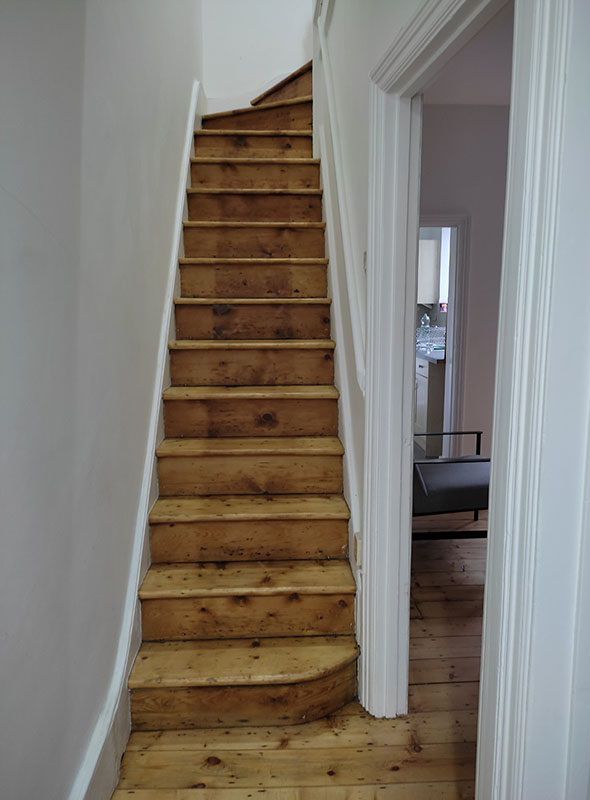 © Christina Werner
© Christina Werner
The live-in duplex studio located in London is very British: In a Victorian townhouse with a small garden that was acquired by the then Economic Ministry in 1993 and made available to the BMKOES for its International Residency Program, artists find tranquility and particularly beautiful light. The Bow neighborhood that forms part of the Borough of Tower Hamlets in London’s East End, is a traditional workers’ district and has a twinning partnership with Mödling. London re-invents itself in another corner every day. With its wealth of galleries, museums, the influential Frieze Art Fair and an active scene, the British metropolis can hold its ground as an art hotspot to date. Hence, there is more than enough to be discovered – apart from the arts, this applies to an unfamiliar sense of time and distance as well as an elaborate waste separation system at the studio (you stuff paper, glass, plastic and metal in pink waste bags on Tuesdays and the rest in black ones for collection on Thursdays).
If you want to be productive artistically, you need to master the art of keeping trips short and not letting the city distract you too much. I did not manage to do that, but at least I met Wolfgang Tillmans on the Tube.

London, UK
44 Copperfield Road, Studio 12/3London, E3 4RR
51° 31’ 09“ N, 0° 02’ 09“ W
UK
in cooperation with ACME Studios
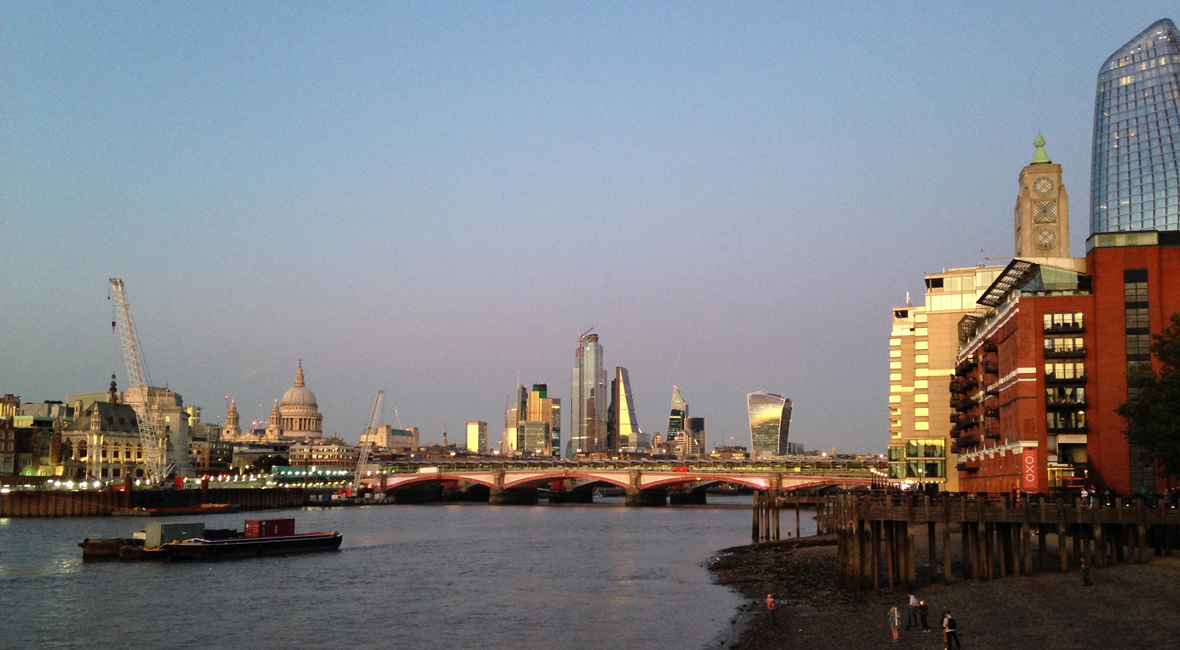 © Claudia Rohrauer
© Claudia Rohrauer
From 1994 to 2001, the International Residency Program of the BMKOES cooperated with ACME, the largest single provider of art spaces in England. Established by artists for artists in 1972, the organization pioneered the revitalization of abandoned properties. Starting with two shops in Bow, the activities have grown and now extend to 16 buildings with a total of 570 studios (in addition to many shared areas) primarily in the East End. The Austrian residency was situated in a reinforced concrete building at Regent’s Canal in 44 Copperfield Road, Studio 12/3. The three-story factory building houses 51 studios. The artists working in the “painter’s studio” lived in a Victorian townhouse in Bow that also accommodated the photo studio of the BMKOES and was acquired by the then Economic Ministry in 1993 and made available to the BMKOES for its International Residency Program.

Berlin, Germany
Adalbertstraße 9510999 Berlin Kreuzberg
52° 30’ 03“ N, 13° 25’ 07“ E
Deutschland
In the middle of Kreuzberg, between Oranienstrasse and Kottbusser Tor, the BMKOES rented a studio in a four-story Berlin townhouse from 1994 to 1997 whose rear building now accommodates the FHXB Friedrichshain-Kreuzberg Museum focusing on urban history. The single studio was linked to the grant program of Künstlerhaus Bethanien in organizational terms. Based in the former “Central Deaconess Institute and Hospital Bethanien” (Central-Diakonissenanstalt und Krankenhaus Bethanien) at Mariannenplatz from 1974 to 2010 (today at Kottbusser Strasse), the Berlin Wall was situated directly behind the Künstlerhaus until 1989. The artists lived in an area that re-invented itself in the 1990s and nowadays is shaped by multiculturalism. For each Austrian artist, Künstlerhaus Bethanien organized an exhibition plus publication. With a twelve-month term, the Berlin studio – along with New York – was among the residencies of the BMKOES that offered the longest stays. In 1997 it was discontinued due to changes in the program of the cooperation partner.

Fujino, Japan
1987 Makino Fujino-machi Tsukui-gunKanagawa-ken Fujino 199-03
35° 35’ 54“ N, 139° 09’ 09“ E
Nihon-koku
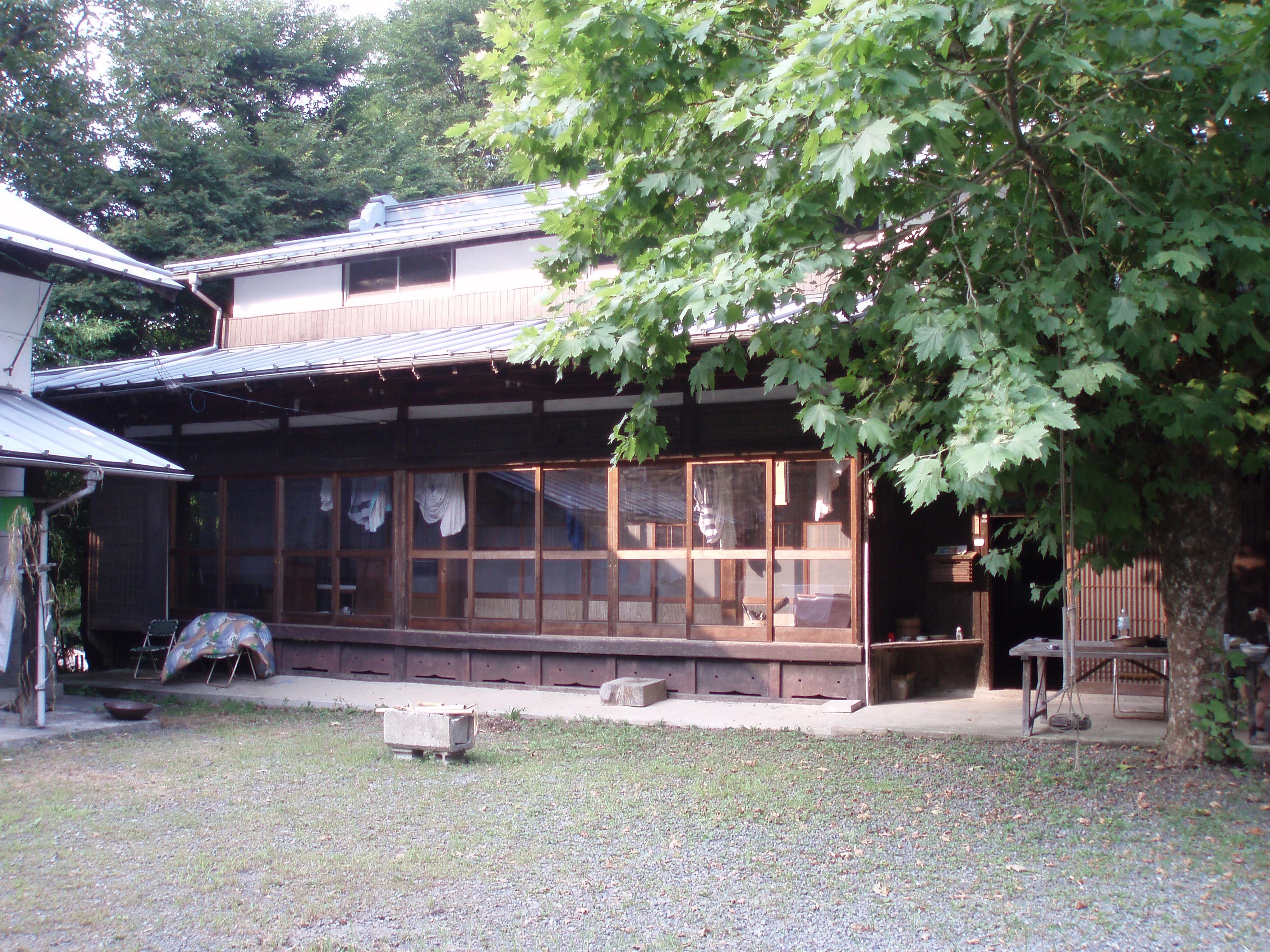 © Karin Frank
© Karin Frank
For a long time, Fujino, located at the Sagami River two hours to the west of Tokyo, was considered to be the most exotic destination in the Residency Program of the BMKOES. The live-in studio was a traditional country house with paper walls, bathhouse and outside toilet and did not offer any luxuries, but authentic insights into Japanese country life and contacts to many artisans who formed an artists’ village in the spirit of 1968 – an environment in which not all the artists-in-residence got along well. The nearby Yamanami Onsen provided the opportunity to immerse in traditional Japanese bath culture. Today the location boasts the Fujino Art Walk with a multitude of outdoor sculptures that appear to be randomly strewn at large across the green hills. The destination was abandoned in favor of the studio in Tokyo.
For me, the residency in Fujino in 1998 was the first step into the world of Asia that was largely unknown to me up to that time. It resulted in invitations to several exhibition projects and stays in Japan and China in the following years. Friendships developed in Japan that have lasted to date. Japanese culture that organizes around empty space fundamentally influenced and changed my understanding of space. […]

New York, USA
Clocktower Building, 108 Leonard StreetNew York, NY 10013
40° 42’ 59“ N, 74° 00’ 12“ W
USA
in cooperation with the P.S.1 International Studio Program
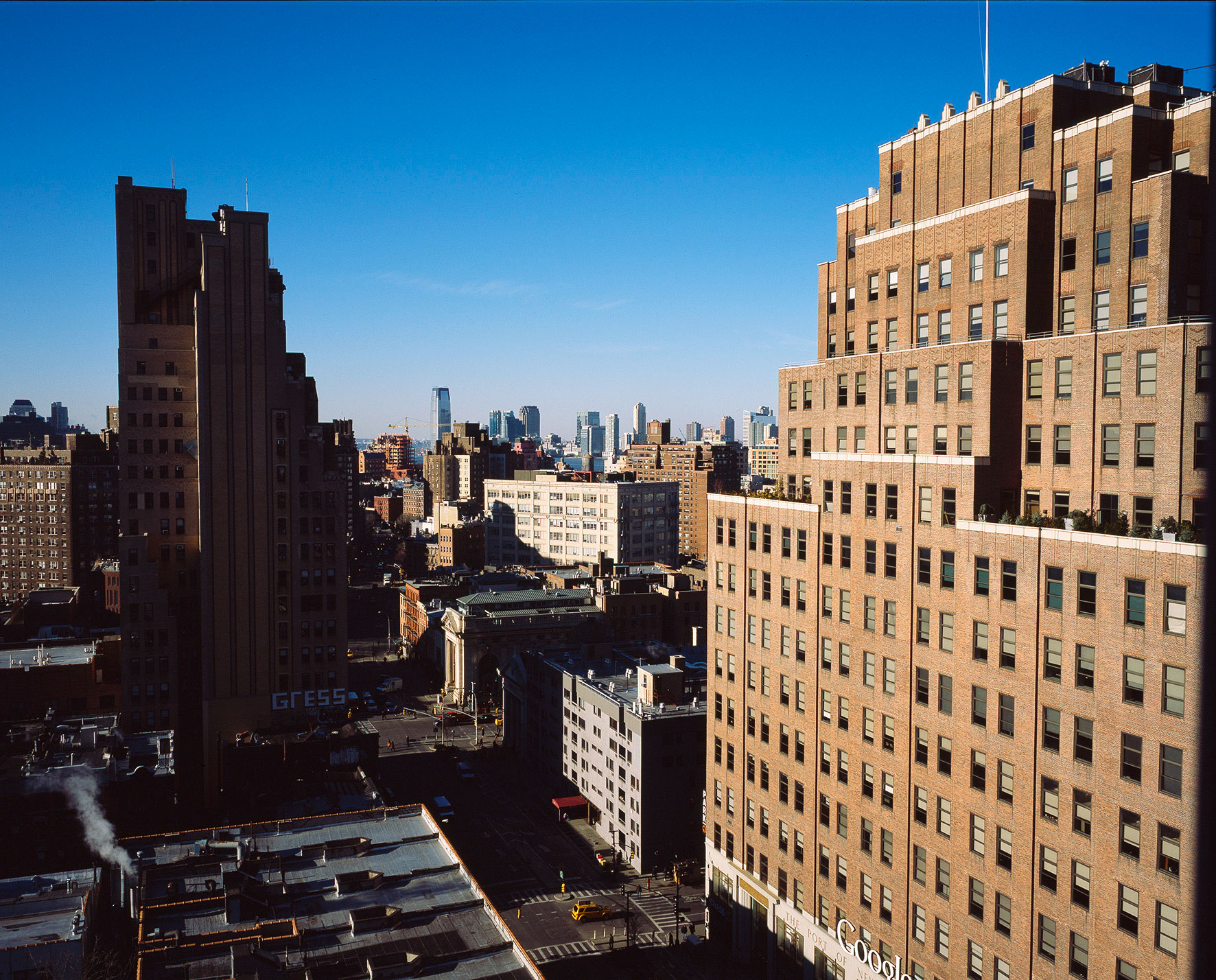 © Claudia Rohrauer
© Claudia Rohrauer
The P.S.1 International Studio Program, founded by Alanna Heiss in 1976 and housed in the impressive Clocktower building in Lower Manhattan, probably was the most popular studio. After Austria-wide calls and the short-listing of ten artists by a national jury, the residency was awarded by P.S.1 that preferred edgy positions. Together with 14 international artists-in-residence, the Austrian artists had a full year for pursuing their own work and exhibiting, exchanging ideas and exploring New York’s art world. They were accommodated at 72–74 East, 3rd Street, art. 6B in the East Village until 1999 and then at 523 Hudson Street, alt. 1RS in Greenwich Village. Cooperation ended in 2004 when P.S.1 fundamentally changed its program.
During my P.S.1 residency, I started project-oriented cooperation with Helmut Weber. We exhibited in the official residency show and the Angel Orensanz Foundation, organized open studios with other artists and had a solo exhibition in the Clocktower: On Conditions – a spatial installation with dance performance.

Cracow, Poland
Izaaka 533-332 Kraków
50° 03’ 06“ N, 19° 56’ 48“ E
Polska
The BMKOES operated the Cracow studio located in the Kazimierz district, which was the center of Cracow’s Jewish population until World War II, from 1991 (well over one year after the fall of the Iron Curtain) to 1999. After the genocide, the history of the place was kept under wraps – the district was subsequently considered a poor quarter where many artists began to settle (also with support by the city administration) from the 1960s on. Declared a world heritage site owing to its largely intact historic Jewish settlement structure in 1978, Kazimierz became well-known, mainly as the location for Steven Spielberg’s film Schindler’s List (1993). In the middle of this quarter steeped in history, the Cracow residency studio was based in the small, old townhouse at Izaaka 5, opposite the Izaak Synagogue (built in 1644 and named after Izaak Jakubowicz, banker to King Władysław IV Vasa) for nine years – a place maybe also to confront the checkered history of Austrian-Polish relations.

New York, USA
810 BroadwayNew York, NY 10003
40° 43’ 58“ N, 73° 59’ 27“ W
USA
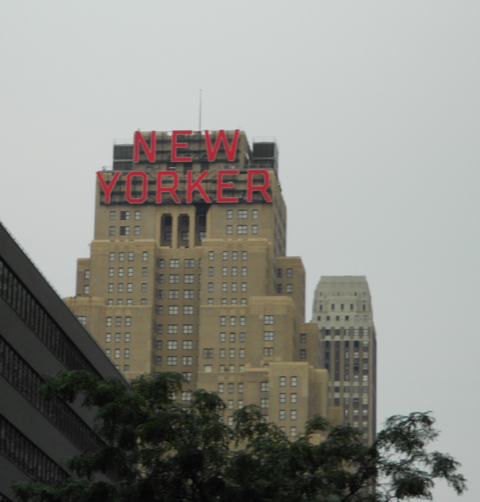 © Alexandra Grausam
© Alexandra Grausam
At the address 810 Broadway in Greenwich Village, the BMKOES offered an independent live-in studio from 1991 to 1997. The 70 m² loft on the seventh floor exactly lived up to what you expect from a cool location in New York, so the artists said: large, open, flooded by light and a marvelous view across the roofs of the surrounding buildings (it was even possible to conquer some of them on fire ladders) with a huge studio wall in the back. Many artists had set up their studios between Grace Church and Union Square – thus, the artists-in-residence were right in the middle of all the action, not only in geographical terms. Attitudes were as open as the studio itself at that time: There were lively exchanges and sometimes continual comings and goings.
Colleagues from Austria dropped in regularly – the studio as a meeting place suited me fine, after all I was keen on getting in touch with other artists and also had established contacts. This resulted in cooperation projects and friendships that still exist today – for example, with the Sandback Foundation. New York has definitely left a mark on my life.

Chicago, USA
1371 North Milwaukee AvenueChicago, Illinois 60622
41° 54’ 26“ N, 87° 40’ 17“ W
USA
The Chicago studio was a cornerstone of the Program for many years – from 1990, it has offered artists the opportunity to go “overseas”, gather experiences and establish contacts for 25 years. It occupied the top floor of a four-story building on North Milwaukee Avenue in Wicker Park – an area that contrasts with modern downtown Chicago by its grid-like streets and low traditional brick houses earning it the designation Chicago Landmark District. Thanks to the Austrian Cultural Forum and contacts to galleries, the independent studio was well networked with the local art scene.
…surrounded by (too) many restaurants, cafés and shops…Chicago and bicycles are in a good and – for certain routes – fast symbiosis. Art: Apart from the classics – the Art Institute of Chicago or the MCA in the downtown area – more and more interesting young galleries and artist-run spaces opened around the studio and towards Logan Square.

Prague, Czech Republic
Nad Panenskou 6169 00 Praha 6
50° 05’ 14“ N, 14° 22’ 59“ E
Česká republika
The Prague studio was established in 1990, directly after the Velvet Revolution (November to December 1989) and the removal of the barriers along the borders, the so-called Iron Curtain, that sealed the 453 km long border between the former Austrian and Czech crown lands from 1951 on. At a distance of just 300 km from Vienna, Prague was a fairly white spot in collective memory during those times. The studio served to discover the local arts scene and a country that was rather foreign to us in spite of its geographical and historical proximity. The live-in studio was located in a block with a green courtyard in Pohořelec at the edge of the historical castle district, between an impressive loop of busy Ulica Patočkova and the famous Strahov Monastery.

Paris, France
20 Rue Geoffroy L’Asnier75180 Paris Cedex 04
48° 51’ 30“ N, 2° 21’ 29“ E
France
in cooperation with the Cité Internationale des Arts
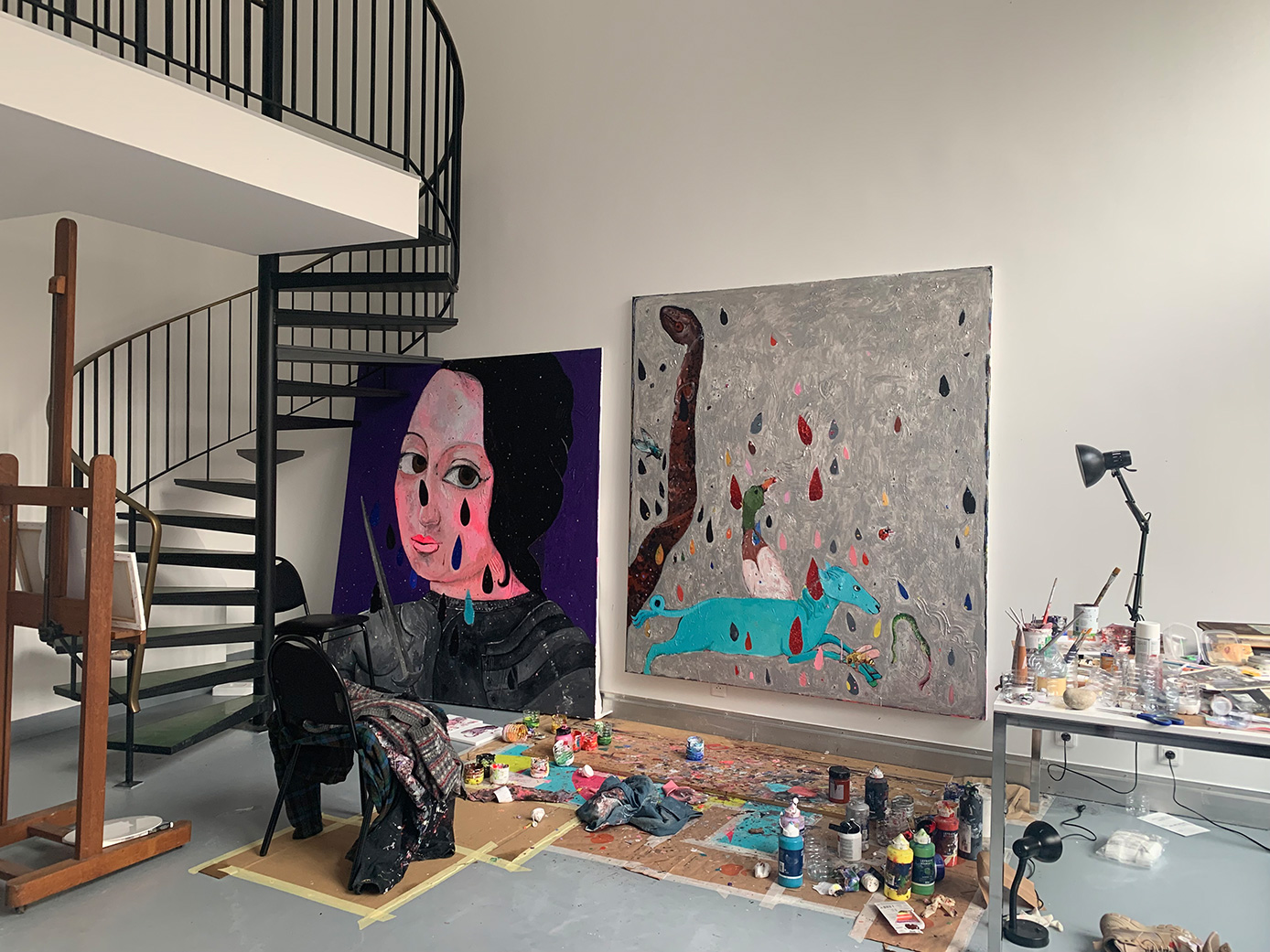 © Beatrice Dreux
© Beatrice Dreux
Paris has an enormous artistic heritage – for a long time, it was the first stop on the Grand Tour –, became a center of art development in the late 19th century and is the city were the avant-garde emerged. The residency ateliers of the BMKOES are situated between the Centre Pompidou and Place des Vosges in Marais – one of the oldest quarters in the center of Paris. Given the ties to the Cité Internationale des Arts and its studio program, contacts to other artists-in-residence come about easily since more than 1,000 international artists work in the studio buildings every year. In total, three studios – including one on the ground floor – are offered to visual and media artists for four-month stays.
Things I miss since I am no longer in Paris: getting up every day, seeing the sky of Paris, feeling the humming freight ships on the Seine and continuing with my work right away, having a fresh croissant or baguette for breakfast, constantly exchanging ideas with many other artists.

Rome, Italy
Via di Tor Millina NR. 3500186 Roma
41° 53’ 57“ N, 12° 28’ 17“ E
Italia
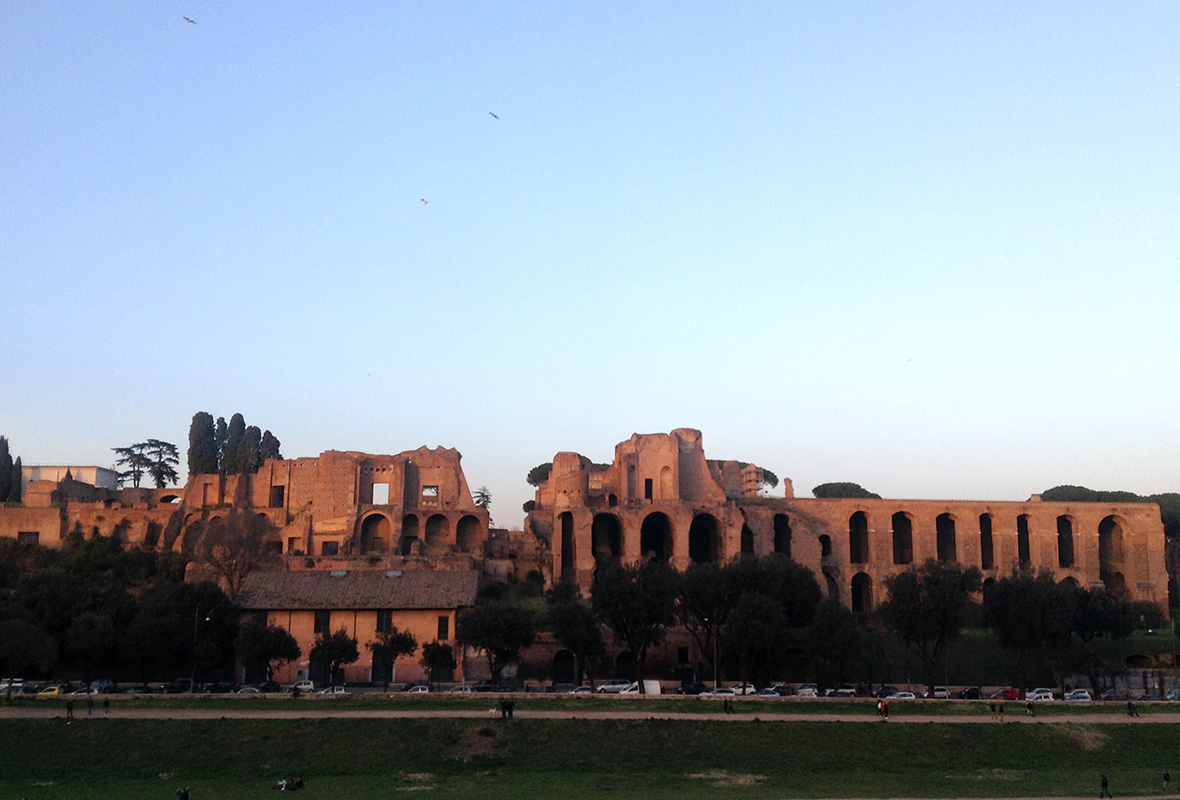 © Tina Ribarits
© Tina Ribarits
The Rome studio was the first in a series of international residency destinations that were to come from 1985 on. Rome is not a center of contemporary art. Owing to its rich history, its wealth of historical buildings and museums, the example set by the German Academy at Villa Massimo and as a classic destination of the Grand Tour, however, Rome was more than predestined to be the first-choice location. Moreover, good contacts to the Austrian Cultural Forum facilitated organizational arrangements. At famous Piazza Navona, the shared studio (used together with photo and literature grant beneficiaries) was based in a historical townhouse for 33 years. It was noisy and sometimes overcrowded – both indoors and outdoors –, which was the main reason for closing the pioneer studio in 2017.
There is always something going on in Rome. Anytime – day and night. When you set out heading for a certain place, this usually means that you will discover uncountable things on your way. The masses of tourists may get annoying, but you can get away from them by making a trip to the countryside, to the sea or to Naples. The list of places you want to visit is not getting shorter but longer and longer over time!


